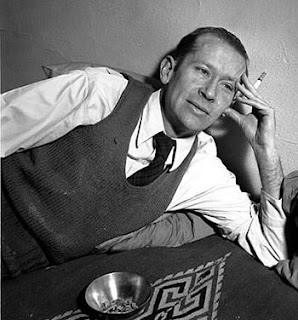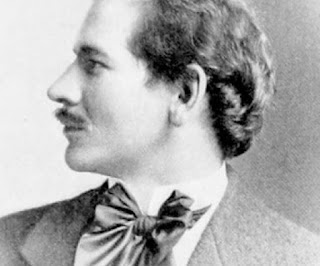E.E. Cummings, 20th-century American avant-garde poet, essayist, playwright, and painter.
References
“E. E. Cummings.” Wikipedia. 2020. Wikimedia Foundation, Inc.
“E. E. Cummings.” Poetry Foundation. 2020. Poetry Foundation.
Profile
- Full Name: E. E. Cummings
- Birth Name: Edward Estlin Cummings
- AKA: Edward Estlin "E. E." Cummings; Edward E. Cummings
- Date of Birth: October 14, 1894
- Place of Birth: Cambridge, Middlesex County, Massachusetts, United States
- Zodiac Sign: Libra
- Date of Death: September 3, 1962
- Died at Age: 67
- Place of Death: Memorial Hospital, Conway, Carroll County, New Hampshire, United States
- Place of Burial: Forest Hills Cemetery, Jamaica Plain, Suffolk County, Massachusetts, United States
- Epitaph:
“Edward Estlin Cummings
1894–1962”
- Cause of Death: Stroke
- Last Words: NA
- Ethnicity: White
- Nationality: American
- Father: Edward Cummings (1861-1926)
- Mother: Rebecca Haswell Cummings (formerly Clarke) (1859-1947)
- Siblings:
- Sister: Elizabeth Cummings Qualey (1901-1980)
- Spouse(s):
- Elaine Thayer née Orr (1895-c. 1974; m. 1924 to 1924)
- Anne Minnerly Barton (b. 1898-d. 1970; m. 1929 to 1932)
- Marion Morehouse (b. 1906-d. 1969 m. 1932 to till his death)
- Children:
- Daughter: Nancy T. Andrews (1919-2006)
- Alma Mater: Harvard University, Cambridge Latin School
- Occupation: Author
- E. E. Cummings is known for: incorporating innovative style and structure as well as mystical and anarchistic beliefs in his works.
- E. E. Cummings is criticized for: producing works that were sentimental as well as politically naïve.
- E. E. Cummings was influenced by: Amy Lowell (1874 -1925), Gertrude Stein (1874 -1946), Pablo Picasso (1881-1973), and Ezra Pound (1885-1972)
- E. E. Cummings’ works inspired: Dave Eggers (1970), and Jonathan Safran Foer (1977)
- Literary movement: Modernism
Quotes
“when man determined to destroy
himself he picked the was
of shall and finding only why
smashed it into because”
– E. E. Cummings, 1 x 1 (1944) no. 26
Awards and Achievements
- Dial Award (1925)
- Shelley Memorial Award for Poetry (1945)
- Harriet Monroe Prize from Poetry magazine (1950)
- Fellowship of American Academy of Poets (1950)
- Guggenheim Fellowship (1951)
- Boston Arts Festival Award (1957)
- Bollingen Prize in Poetry (1958)
- Two-year Ford Foundation grant of $15,000 (1959)
- Charles Eliot Norton Professorship at Harvard (1952–1953)
- Special citation from the National Book Award Committee for his Poems, 1923–1954 (1957)
Major Themes
- Love
- Sex
- War
- Childhood
- Nature
- Religion
Major Literary Works
- The Enormous Room (1922)
- Tulips and Chimneys (1923)
- & (1925) (self-published)
- XLI Poems (1925)
- is 5 (1926)
- HIM (1927)
- ViVa (1931)
- CIOPW (1931) (artworks)
- EIMI (1933)
- No Thanks (1935)
- Collected Poems (1938)
- 50 Poems (1940)
- 1 × 1 (1944)
- Santa Claus: A Morality (1946)
- XAIPE: Seventy-One Poems (1950)
- i—six nonlectures (1953)
- Poems, 1923–1954 (1954)
- 95 Poems (1958)
- 73 Poems (1963) (posthumous)
- Fairy Tales (1965)
- Etcetera: The Unpublished Poems (1983)
- Complete Poems, 1904–1962, edited by George James Firmage, Liveright 2008
Major Artworks
- e. cummings Self-Portrait
- Noise Number 13
- Scofield Thayer
- Untitled
- Sound
Did You Know?
- E. Cummings was the eldest of the two children born to Edward Cummings and his wife Rebecca Haswell Cummings.
- His father was a professor of sociology and political science at Harvard University. Subsequently, he left Harvard to become the minister at Old South Church in Boston.
- His mother Rebecca Haswell Clarke was the niece of Susana Haswell Rowson, the author of Charlotte Temple, the first bestseller novel in America.
- When her parents separated, Rebecca changed her last name from Hanson to Clarke, her mother’s maiden name.
- In 1933, Cumming’s younger sister Elizabeth Cummings married Carlton Chester Orlando Qualey (1904-1988), a Carleton College faculty member. The couple had two children namely John and Mary.
- Elizabeth Cummings Qualey’s When I Was a Little Girl (1981) contains memoirs of her childhood which she wrote 30 years ago for her children. In this book, she recounts her life with parents, brother E.E. Cummings, relatives, and friends from school, college and university.
- Cummings’ endeavour of writing dates back to early 1904 when he was under 10 years of age. His parents supported him spontaneously to help to develop his creativity.
- He graduated from Harvard University with a Bachelor of Arts degree in 1915 and received a Master of Arts degree from the very university in 1916.
- After his graduation, Cummings served as an ambulance driver in World War I. Later on, he was unjustly imprisoned for three months at a French camp on suspicion of This experience inspired him to write his first book The Enormous Room (1922).
- Failing to release his son through diplomatic channels, Edward Cummings wrote a letter to President Woodrow Wilson. Cummings was finally released on December 19, 1917, and returned to the United States on New Year’s Day 1918.
- Later in July 1918, he was drafted into the U.S. army. He served at Fort Devens, Massachusetts, until the end of the war in 1918.
- In the post-World War I era, spanning between the 1920s and 1930s, he started to live interchangeably in France and the United States, finally settling in New York City.
- In the year 1921, he went to Paris to study art. Cummings also met Pablo Picasso, the famous 20th-century painter whose work he venerated most.
- During his lifetime Cummings’ book earnings were never lucrative and he always had to remain worried about money. Due to abject financial condition, he continued accepting cheques from his mother even during his 50s.
- Cummings sent his poems in The Dial magazine so frequently that he won the Dial Award for poetry in 1925. The award secured Cummings a sum of $2,000.00 which was equivalent to his full year’s income.
- In 1926, Cummings’ parents encountered a fatal car accident, which instantly killed his father and left his mother severely injured but she did ultimately survive. His father’s demise left a profound impact in his mind and it paved the way for the beginning of a new phase of artistic development. Cummings paid tribute to his father in his poem my father moved through dooms of love.
- Cummings was married thrice, which reportedly include a long-term common-law marriage. He and his first wife, Elaine Orr was involved in an illicit love affair in 1919 while she was still married to Scofield Thayer, Cummings' best friend, mentor, and patron. When Thayer learnt about the relationship he was unruffled. Orr gave birth to Cummings’ only child Nancy on December 20, 1919. When Thayer divorced Orr, she and Cummings got married on March 19, 1924. However, the marriage lasted for less than nine months. He espoused his second wife Anne Minnerly Barton on May 01, 1929, but they got divorced three years later in 1932. Then Cummings met the fashion model and photographer Marion Morehouse. Although Morehouse lived with him till his death, it is still debatable whether they ever formally married.
- Before divorcing Elaine, Thayer took the complete financial responsibility for Elaine and Nancy. But after the divorce, he continued to provide support for Nancy.
- His daughter, Nancy was a poet, writer and artist.
- Until 1948, Nancy thought that Thayer was her biological father, but not Cummings.
- In 1943, Nancy married to Willard Roosevelt, the grandson of the former President Theodore Roosevelt but got separated in the early 50s. In 1954 Nancy married Greek classicist Kevin Andrews, the marriage, however, formally dissolved in 1968.
- At different stages of her life, Nancy used various names such as Nancy Thayer and Nancy Roosevelt. But ultimately she opted to use the name Nancy T. Andrews for the rest of her life. However, in her book Charon’s Daughter (1977), she used her name as “Nancy Cummings de Fôret.” And this is for the first and last time she used her father’s name.
- Initially, Cummings had to self-publish his works since none was interested to publish his works. Even after receiving the Dial Award, Cummings still struggled to manage a publisher. Only in the 1940s and 1950s, his writing style became popular and received critical acclamation.
- Cummings invented an exceptionally unique writing style which no one else followed. He deviated radically from the accepted rules of punctuation, spelling, capitalization and syntax. He even invented weird compound words to create a more subjective style.
- Tulips and Chimneys, Cummings’ first collection of poems, was published in 1923. Although Cummings was satisfied with the overall execution of the book, he was utterly displeased with the publisher as he reduced the book from 152 poems to 86 poems and replaced the “&” in the book title with the word “and”. The deleted poems, however, were published in 1925 under the title “&”.
- Apart from writing poems, novels, plays, and essays, Cummings also created numerous drawings and paintings. His most notable collection of artworks is CIOPW (1931), which contains 27 drawings and 72 paintings.
- At the time of his demise, Cummings was recognized as the second-best American poet after Robert Frost.
Media Gallery
Photos
Videos
References
“E. E. Cummings.” Wikipedia. 2020. Wikimedia Foundation, Inc.
27 May 2020< https://en.wikipedia.org/wiki/E._E._Cummings>.
“E. E. Cummings.” Poetry Foundation. 2020. Poetry Foundation.
27 May 2020< https://www.poetryfoundation.org/poets/e-e-cummings>.
















